My allotment is not like most, I don’t have raised beds, I let weeds grow because I love them and I produce food for us but also for wildlife. If a leaf is nibbled I don’t care. I try not to care about the destructive foxes either although when they rip a branch off a stepover apple tree or tear up a rosemary I’d spent the last year training, they’re pushing it.
The joy wildlife brings me is greater than anything else, from moths and butterflies, millipedes and centipedes, beetles, flies, bees, wasps, birds, frogs, newts. Over the years I’ve nurtured the ecosystem across my plot to bring diverse life around the space I grow. It’s the most important aspect of my allotment: it is wild and free.
However I think I may have gone too wild in one area…
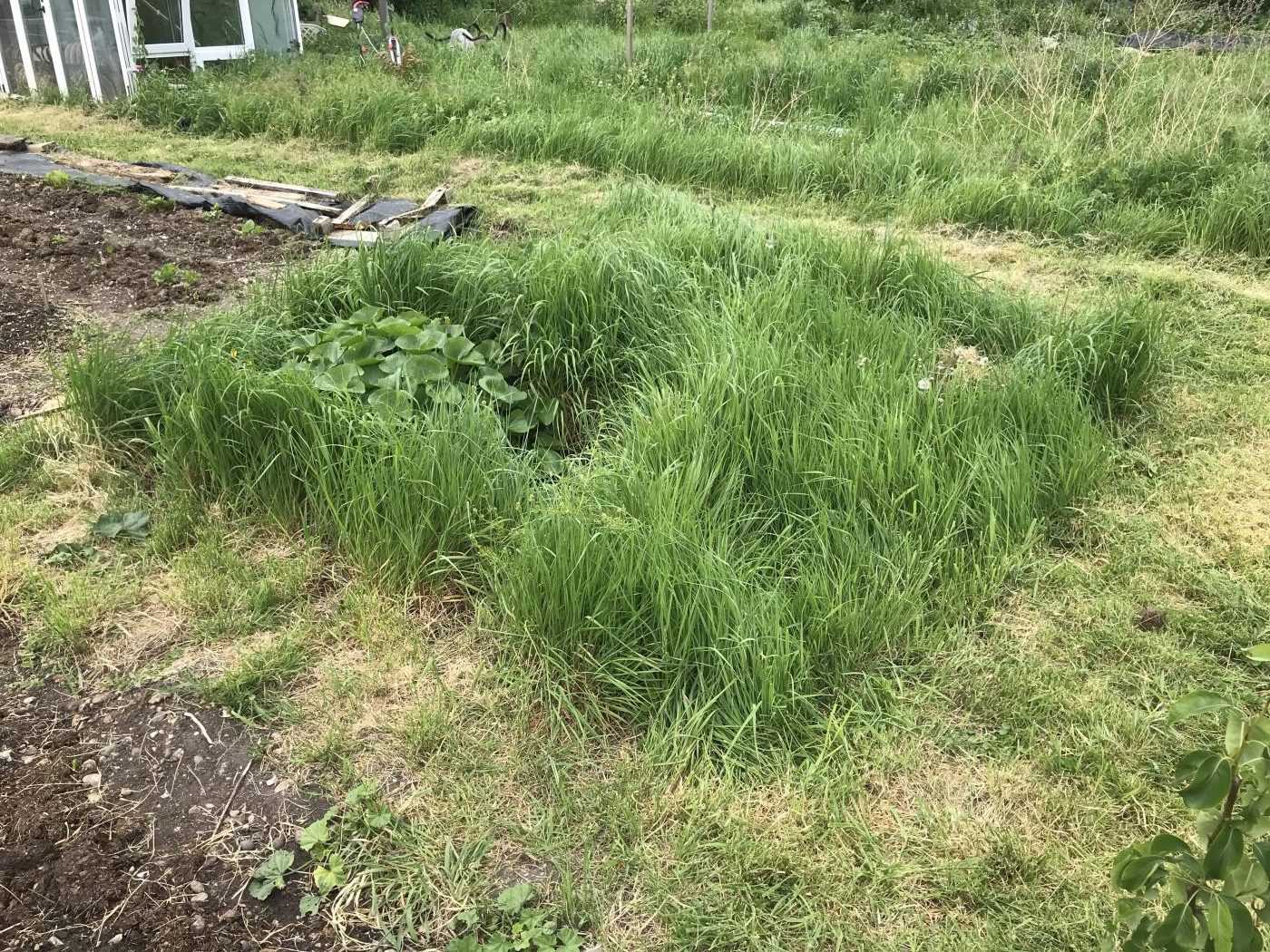
My mini meadow, which contains the wildlife pond, I love to bits but now the grasses are all going to seed, their seeds are pouring into my courgette and raspberry beds even with paths in between. It is a problem.
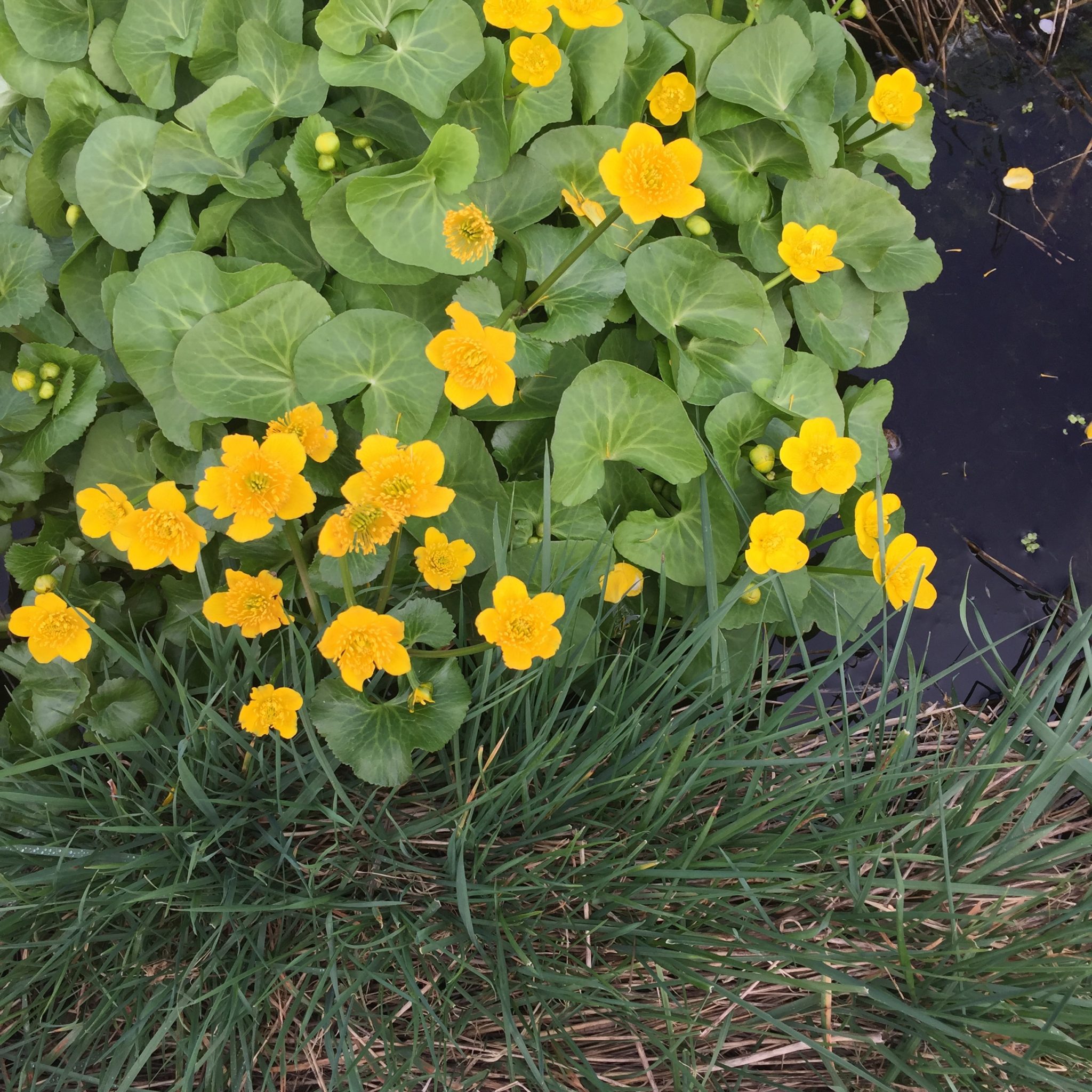
Last year I sowed Rhinanthus minor (yellow rattle) into the area hoping to slow the vigour of the grasses, as it’s hemi parasitic. I haven’t yet seen a R. minor flower but I’m hoping at least a few are growing in there somewhere.
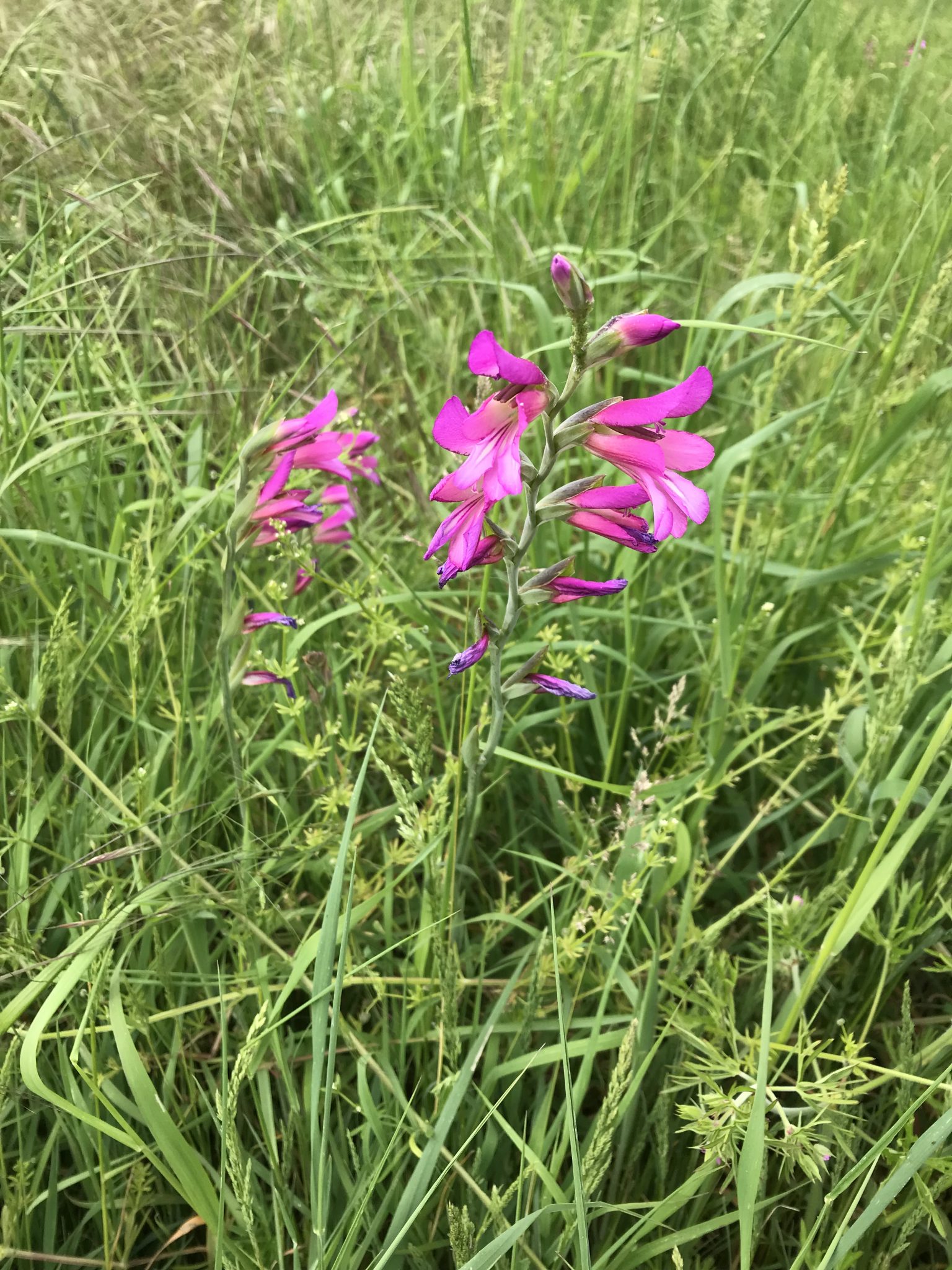
I also planted a good number of Gladiolus communis subsp. byzantinus into the meadow area and there are already some crocus, allium and Narcissus ‘Tete a Tete’ from the previous owner’s planting. Otherwise I’m letting the patch do it’s own thing from local seed.
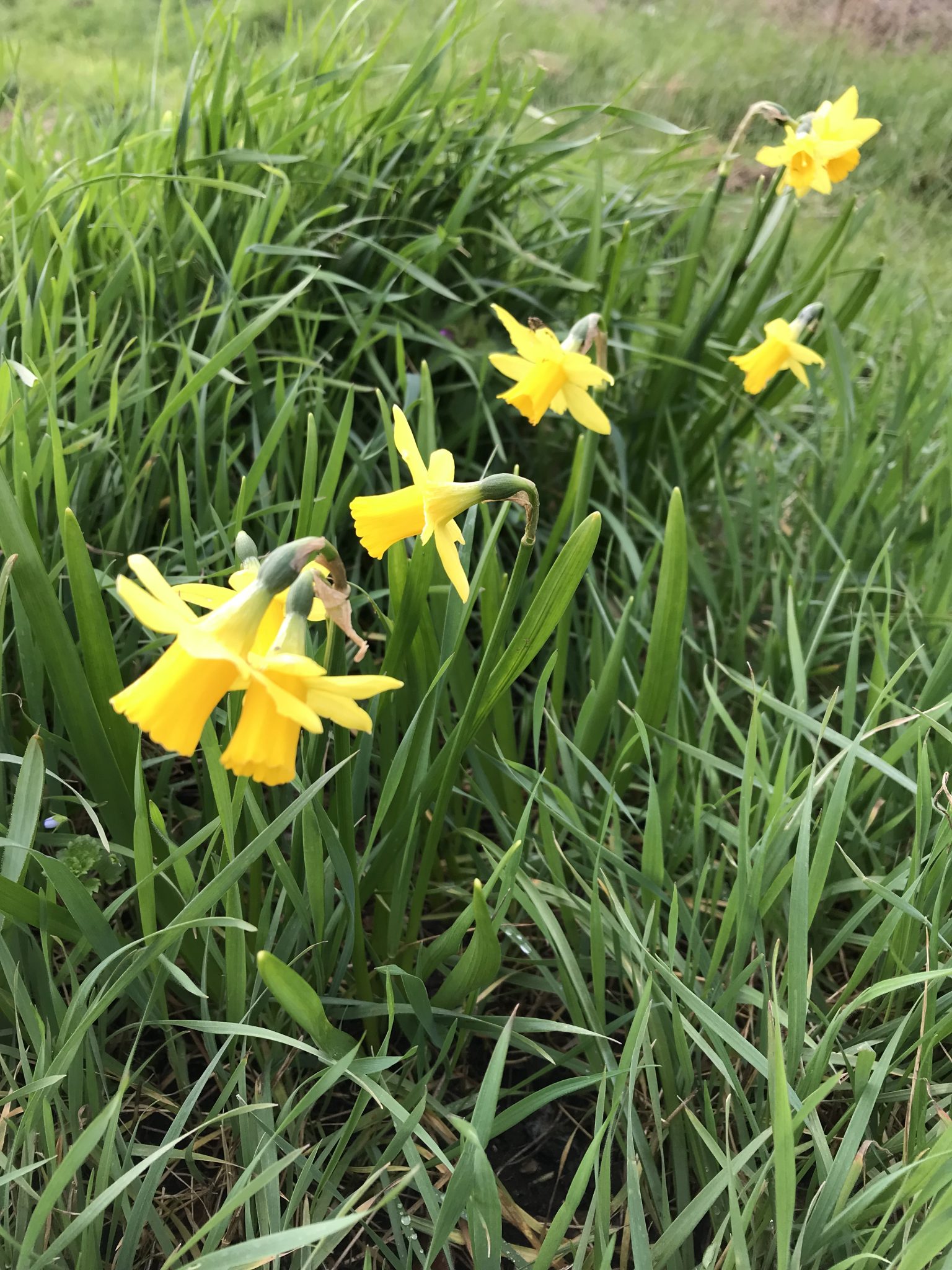
It already has a malva spp. and Centaurea nigra, which I’m hoping spread to compete with the mass of grasses. My plot has lots of Daucus carota which I leave and I’m going to continue sprinkling their seeds into this square until they take. I want the patch to have more flowers for me but also for pollinators, but I’m only now encouraging flowers from the plot itself. Wild plants and vagabonds.
Wild patches are well and good and obviously as a wildlife gardener and conservationist, you’ll be familiar with my rants encouraging them. But grass seeds are a real problem, quickly colonising the bare soil of a productive veg plot. I don’t want to eliminate these grasses completely but I do need reduce their number.
Ordinarily I would only cut in late summer but I’m going to cut the grasses this coming week and remove the clippings in an attempt to reduce their vigour and remove the seeds before even more rain down on this spot and the other patches. In late summer I’ll make another round of R. minor sowing, perhaps try some plugs too if I can get hold of some.
Other than that, I’ll keep encouraging the wildflowers to get a grip and push some of the grasses back. And I’ll keep enjoying the insects, frogs and newts that live here.
It’s a fine balance in a garden, especially with vegetables where there is so much bare soil required for healthy crops. I don’t think anyone has the exact answer of what the correct balance is, all we can do is keep experimenting and observing what nature and our own human need to survive is telling us. We can live together in harmony and with balance, it just takes understanding of nature to make sure we’re not causing too great a disruption in the little ecosystems.
Has your allotment or garden got a wild patch? What have you learnt from it? Please share with comments below.
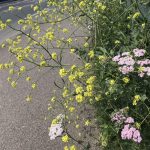
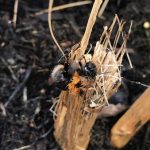

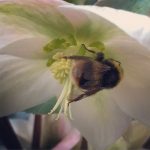
I had to google “newt”.
Your allotment is wonderful.